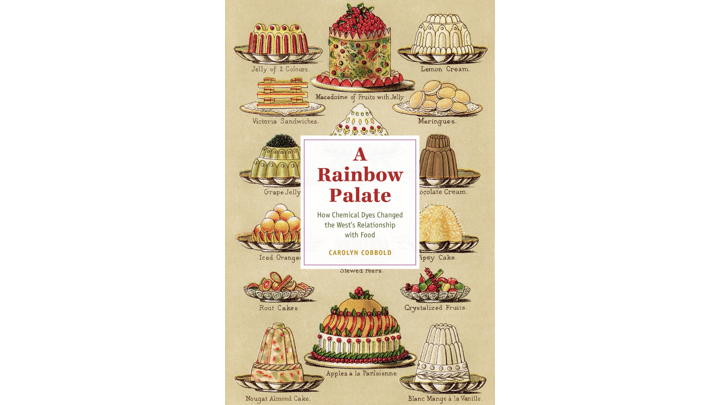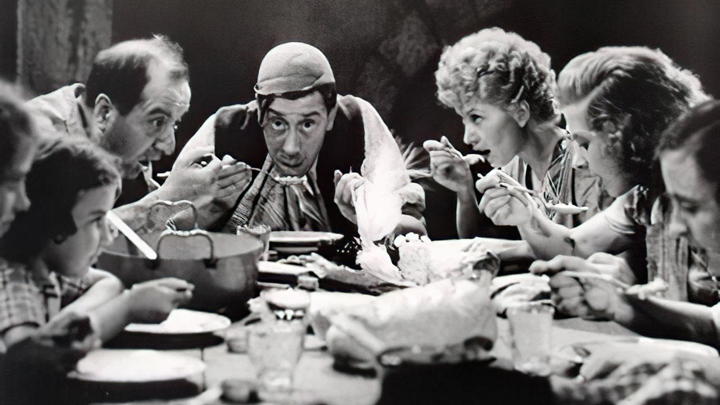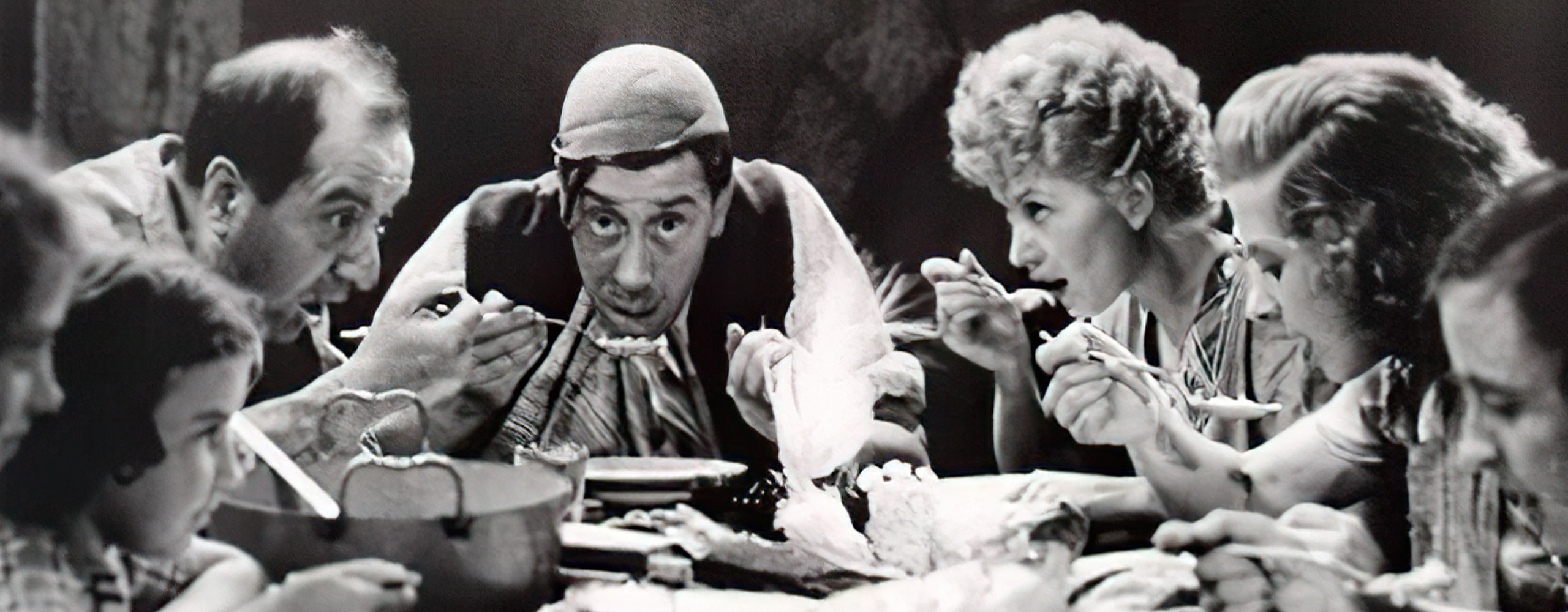COM_SPPAGEBUILDER_ADDON_ARTICLE_NO_ITEMS_FOUND
About Talking of Food
Talking of Food is a magazine website set up by a group of people who love not only food but also the diversity of its culture. It is not bound by ideology or momentary fads but has an open mind towards opposing views. Its contributors are often experts in their field and discuss wide ranging subjects such as antibiotics in the food-chain, the opposing arguments on GM food or the future of food. On a lighter note see how they make noodles in China or follow Elisabeth Luard's classic series on European Peasant Cookery.
Lockdown Food: Part 5

The Ultimate Lockdown
If you ever feel at risk of sinking into depression over your social life during these socially isolated and distanced times, or look at your store cupboard and wonder whether you can hold out until the next Ocado delivery, or indeed try to to get a slot and fail, A Woman in the Polar Night by Christianne Ritter is the book you need to have by your side.
This is one of my most favourite books. In 1934 Christianne Ritter left her comfortable, cultured life in Austria to join her husband, who was living as a hunter and researcher in Spittsbergen. She did not know what to expect. Her first surprise was to find that they would be living with a third person, another hunter. Their hut was tiny, only about ten foot square, although the men gallantly built a six x 4 foot extension , to give her some privacy. When winter set in, there was total darkness for 24 hours a day from October to the end of February. During this time the men disappeared for several weeks. The hut got completely covered by snow. Every day she had to hack at the impacted ice and shovel the snow, to keep the entrance free and then set tasks for herself, chopping wood, mending and cleaning, to keep sane and warm.
There were weeks of extraordinary beauty and bearable temperatures but on the whole their life was an unremitting struggle to stay warm and fed and to kill enough bear, seal and birds to keep them alive and provide them with enough energy. This was no place to be a vegetarian and certainly no place to be vegan. She writes of their longing for spring, when the melting and shifting ice packs brought polar bears, as a change to their dwindling and unpleasant diet of seal meat.
Her first meal, served by the men, although she was expected to cook from then on, was porridge, salted with sea water and cooked on their collapsing, smoking stove, that had to be fired up with seal fat. The condition of the stove, without which they would surely die, was a constant worry for her, how to light it — at one point when the men were away, she got down to her last four matches — how to stop it from smoking so badly that they can hardly breathe, and the hut that she struggled to keep clean became covered in smut. Coffee is drunk in large quantities, everything is dried, there is nothing fresh, they have no source of vitamins, she discovers that half the potatoes are rotten and that they have just six salted cabbage heads, which are meant to keep them going until the spring.
The men shoot a seal, they skin and eviscerate it.
“Then from the fatty skin he removes the small, solid little feet with their long flippers and smacks them into the basin. “We can have that for supper this evening." Obedient and shuddering, I carry the twitching dish back to the hut. I’m utterly at a loss. Ought I to boil, roast, or bake the flippers, and with or without the skin, with the long black nails or without? I shudder when I think that I will have to eat it. They call out to me again, “Another basin please. Larger, if there is one.”
I take the big bear basin down to the shore to receive the seal’s liver. There are five enormous pieces ,weighing at least six pounds.
“You know the liver’s best when it’s eaten quite fresh”, my husband informs me.
I am very glad that I can now evade the problem of the flippers , and I prepare the evening meal of liver minute steaks , with mashed potatoes and fresh onions.”
As the days pass, Christiane confesses:
“I am at the end of my resources. Whether I boil, bake or roast it, the meat is always black as coal and whether it is seal blubber or seal cutlets, the taste is still the same, something between hound and fish.”
They shoot some eider ducks.
“Breast and legs go into the saucepan to be cooked, all the rest is casually thrown away. These birds, I am instructed, cannot be plucked, because the skin and even more, the layer of fat underneath it, which tastes fishy, are inedible; apart from that, offal is of inestimable value in Spittsbergen. This dish too, comes out coal black, but the broth is excellent, and the black, tender meat tastes at least as good as the meat of wild duck at home.”
They feel incredibly lucky when they come across a piece of dried up yeast.
“This is carefully softened and stirred in a bucket with water and flour. The bucket is placed in one of the bunks and warmly wrapped in blankets."
This process is treated with the utmost, almost religious seriousness and anxiety but
“at last the dough in the bucket does rise, nursed so tenderly, it rises over the edge and into the warming blankets… And now the kneading on the little table by the window at which we eat. The hut shakes and the sweat starts out on the men’s foreheads. They are white from flour, and the hut is white. Standing ready on the stove are the bear pans and empty tins, and every available utensil in the hut. A murderous fire is stoked up. Since the oven is not working, the bread is going to be baked on the top of the stove, and the hut itself will be the oven.
The next morning we have bread for breakfast. We eat bread with butter, bread with cheese, bread with seal, bread with salted bacon…’
Later they shoot another bearded seal.
“The liver alone filled a large bucket, and another bucket was filled with its blood.
Karl cooks some blood pancakes, a speciality of Spittsbergen hunters, and with great gusto eats practically all of them himself, while we only nibble at little morsels of the delicacy, feeling compelled to eat some because of its high vitamin content.”
“Our Christmas dinner is elegant. Each of us as prepared one course. We have ptarmigan with rice and stewed apricots and, to crown it all, a caramel cream made of eider duck eggs, burnt sugar and condensed milk. The cream tastes horribly of seaweed and mud, I can not swallow a single spoonful, but the men are ready to lick their plates”
The dish has used up their last egg and they will have to wait another six months before more ducks arrive to lay. They celebrate New Years Eve with raspberry juice and surgical spirit.
As she boards the ship to go home, Christianne reflects that:
“The Arctic does not yield its secret for the price of a ship’s ticket. You must live through the long night, the storms, and the destruction of human pride. You must have gazed on the deadness of all things to grasp their livingness.”
This is a wonderful book, sadly out of print at the moment and the only available second hand copies sell for £100 or more. I treasure mine, which I was incredibly lucky to get for a lot less. It’s even more precious to me because it was given as a gift and bears a handwritten inscription; “A portrait of a wise and beautiful woman".
Featured posts

A Rainbow Palate: How Chemical Dyes Changed the West's Relationship with Food
If you opened a can of baked beans to discover a brown gloopy sauce containing brown haricot beans, rather than the orange-red sauce and beans you were expecting, what thoughts would run through your head?
Dr Carolyn Cobbold’s research interests are science and food in the nineteenth and twentieth centuries. She has recorded two extracts from her book A Rainbow Palate: How Chemical Dyes Changed the West’s Relationship with Food for Talking of Food

Announcement
Talking of Food has moved
Although the site has migrated to the new server, there is still work to be done and some of the content of the site will still be unavailable for a while.

Nicholas Culpeper: The Complete Herbal
Not only do many modern medicines have their origins in herbal medicine, more and more people are turning to herbal preparations—with or without also accepting modern drugs, vaccines and medications—and alternative, traditional treatments are popular. At Talking of Food we have our series on Vitamins, so we have decided to look into one of the most celebrated of herbalists, Nicholas Culpeper.



